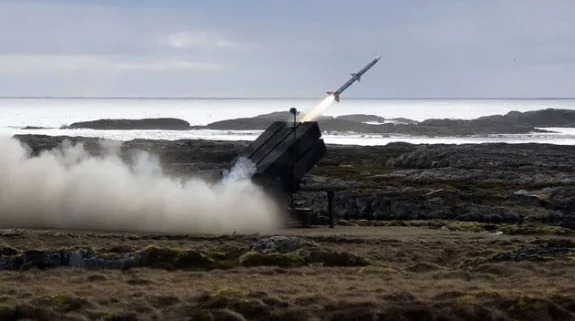NewsGate Press Network
The defence ministry on Friday the 4th of November 2022 announced that at least five world class defence and strategic systems have been ordered from Indian vendors who had developed technologies without any outside help.
In technical terms it is known as – giving approval for Project Sanction Orders (PSO) of Make II projects which basically means that such sensitive defence contracts are essentially industry funded projects involving design, development and innovative solutions by Indian vendors for development of prototypes.
According to an official release – following are the projects whose PSOs have been approved:-
High Frequency Man Packed Software Defined Radio (HFSDR). Project Sanction Order (PSO) for development of prototype of Frequency Man Packed Software Defined Radio (HFSDR) under Make II scheme has been issued to 14 Developing Agencies (DAs). 300 HFSDRs are planned to be procured by the Indian Army, on successful development of the prototype. State of the art, light weight HFSDR will provide long distance radio communication through enhanced data capability and band width coupled with enhanced security. It will facilitate blue force tracking with map based navigation using GIS, thereby increasing real time situational awareness. These radio sets will replace the existing HF radio sets in the inventory, which have limited data handling capability and obsolete technology.
Drone Kill System. RPAS/ s have greatly impacted the modern battlefield even though drone related technologies are constantly evolving. The indigenous industry has adequate expertise to develop world class products in this field. As part of efforts to further encourage the indigenous anti-drone ecosystem, the Indian Army has approved Project Sanction Order (PSO) to 18 Developing Agencies (DAs) for procurement of 35 sets of Drone Kill Systems under the Make II scheme, post successful development of Prototype. The project is reserved for MSMEs/Start-ups. Drone Kill System is a hard kill anti drone system against low Radio Cross Section (RCS) Drone/ unmanned Aerial System (UAS), being developed to function in all types of terrains, both during day and night.
Infantry Training Weapon Simulator (IWTS). Project Sanction Order (PSO) has been issued to four Developing Agencies (DAs) to develop the prototype for subsequent procurement of 125 sets of IWTS under the Make II procedure. The IWTS is the first tri service Make II project with the Indian Army as the lead service. The project is reserved for MSMEs/ Start ups. IWTS will be utilised to augment marksmanship skills of young soldiers on variety of weapons used by the , providing user friendly graphics to simulate battle scenarios. IWTS is a modern training aid, which will reduce recurrent expenditures on live ammunition, besides obviating the challenges of availability of firing ranges and inclement weather. Each IWTS will facilitate training of 10 personnel at any one point of time.
155mm Terminally Guided Munitions (TGM). Project Sanction Order has been issued to six Developing Agencies (DAs) for development of 155 mm Terminally Guided Munition (TGM) under Make II scheme. Variants of ammunition were held in the inventory of the IA, sans, the precision strike capability. The IA therefore plans to procure approximately 2000 rounds of 155mm TGM against High Value Targets with assured Precision and Lethality for mission accomplishment and minimum collateral damage.
Medium Range Precision Kill System (MRPKS). Project Sanction Order has been issued to 15 Developing Agencies (DAs) for developing a prototype of MRPKS under the Make-II category of DAP 2020. Post successful development of this prototype, the IA will procure 10 Sets of MRPKS.
The Medium Range Precision Kill System (MRPKS), once launched can ‘Loiter’ in the air for upto two hours and can acquire, designate and engage real time high value targets upto 40 km.
In simple terms it is known as “Loitering Munition Technology” systems.
The official release added – the Indian Army is already progressing 43 ongoing projects under the Make II procedure of Capital Acquisition. 17 out of 43 projects have been initiated through suo-moto proposals received from the industry, which has generated enthusiasm and confidence in the Indian defence industry for participation in the “Make procedure”.
Make II procurement scheme has given an impetus to increase the Design & Development in the defence industry to achieve indigenisation of high end technology systems in various types of weapon systems, ammunition and modern training systems, which are currently not available in the country. Multiple measures to expedite the ongoing Make II projects have resulted in tangible outcomes. 22 out of 43 Make II projects are now in prototype development stage, which is 66 % of projects by cost (Rs 18,000 Crores out of 27,000 Crores).


Comments are closed for this post.